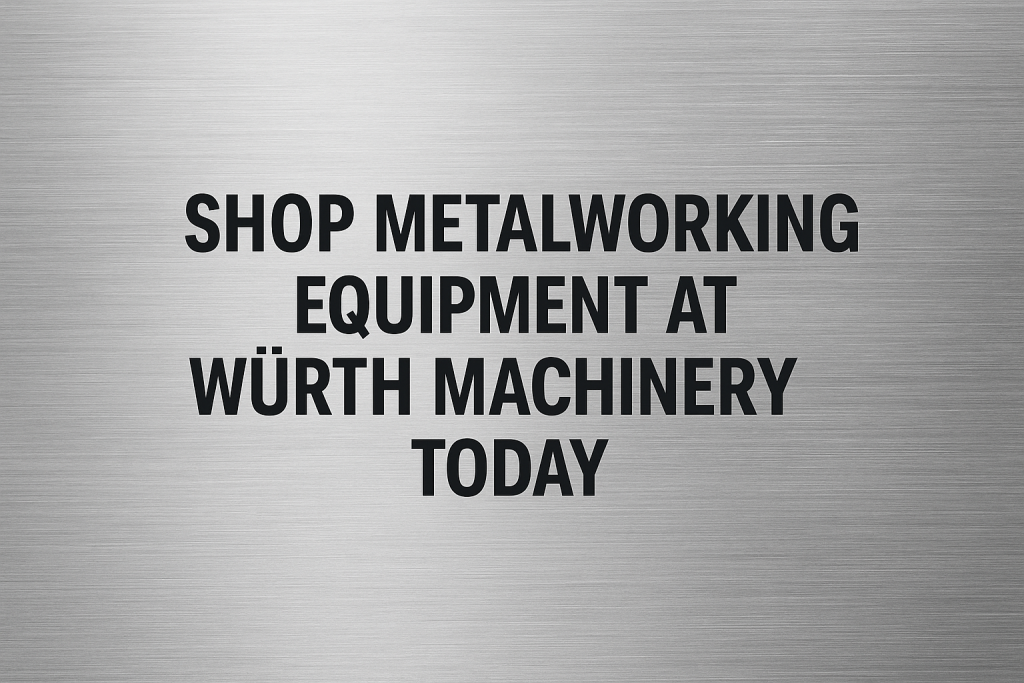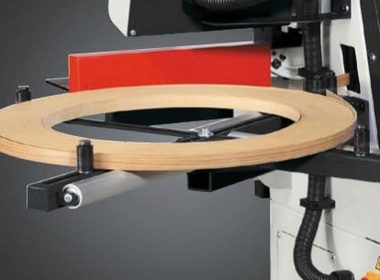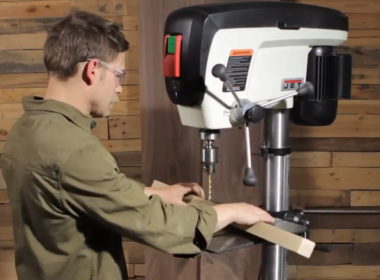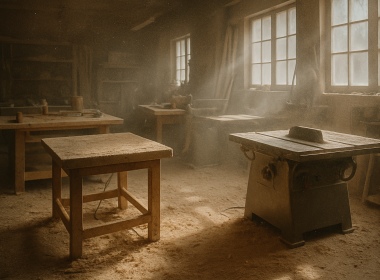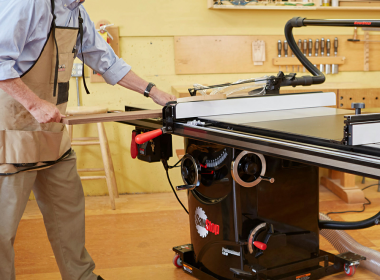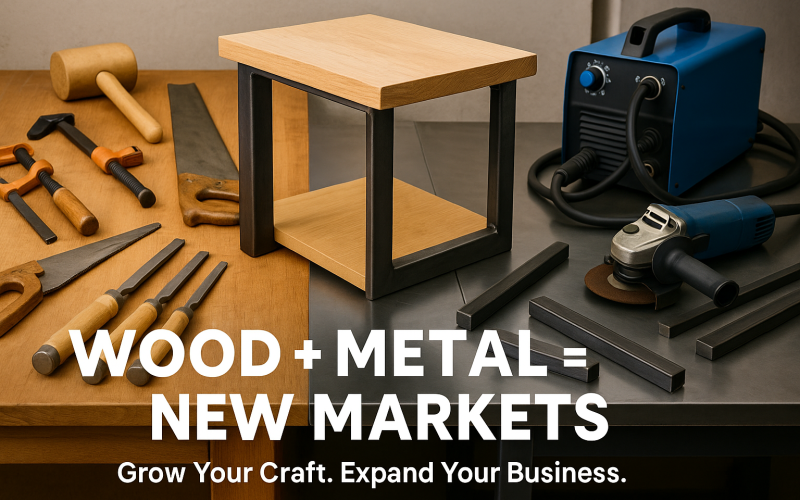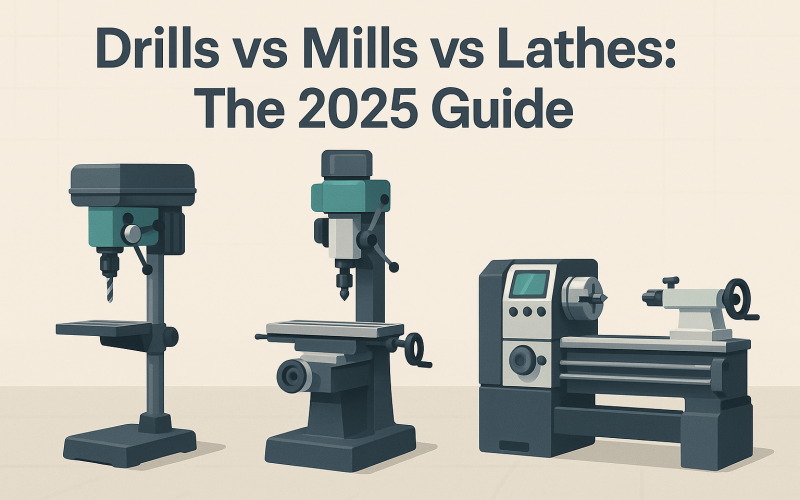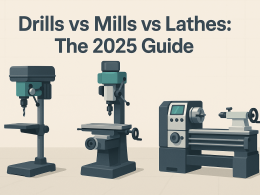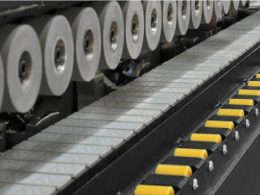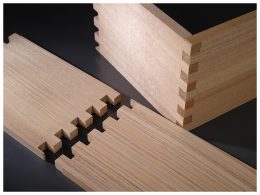Woodworkers who want to grow their business face a critical choice in 2025: stay comfortable with wood-only projects or expand into new territory. Adding metal fabrication to your woodworking shop isn’t just about buying new tools—it’s about transforming what you can create and who you can serve.
Many successful woodworkers hesitate at the thought of working with metal. The skills seem different, the tools unfamiliar, and the investment potentially large. But what if the gap between woodworking and metalworking is smaller than you think?
Consider this: both crafts share core principles of precision, patience, and design thinking. The woodworker who carefully measures twice and cuts once already has the mindset needed for successful metal fabrication.
The most significant barrier isn’t technical—it’s psychological. The fear of the unknown keeps talented woodworkers from exploring the creative and financial benefits of metal integration.
This guide will walk you through each step of adding metal fabrication to your woodworking business—from assessing your current shop to marketing your new hybrid creations. You’ll learn which equipment gives the biggest return on investment, which skills transfer directly from woodworking, and how to avoid the expensive mistakes that derail many first-time metal fabricators.
Ready to transform your woodworking business into something stronger, more versatile, and significantly more profitable?
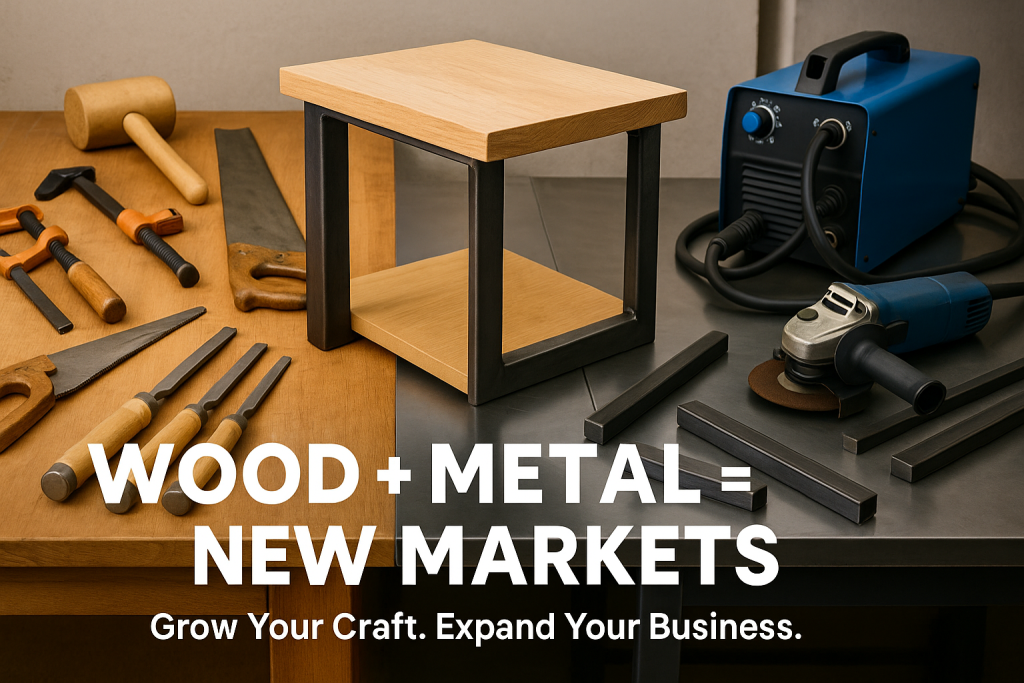
Steps to Integrate Metalworking into Your Woodworking Business
- Adding metal fabrication can double your product offerings and increase revenue by 30-40%
- Proper integration requires careful planning, equipment selection, and skills development
- Start small with basic techniques that complement your existing woodworking projects
Adding metalworking to your woodworking business is a strategic move that can transform your product line and business model. By following these structured steps, you can tap into this lucrative market without overwhelming your existing operations.
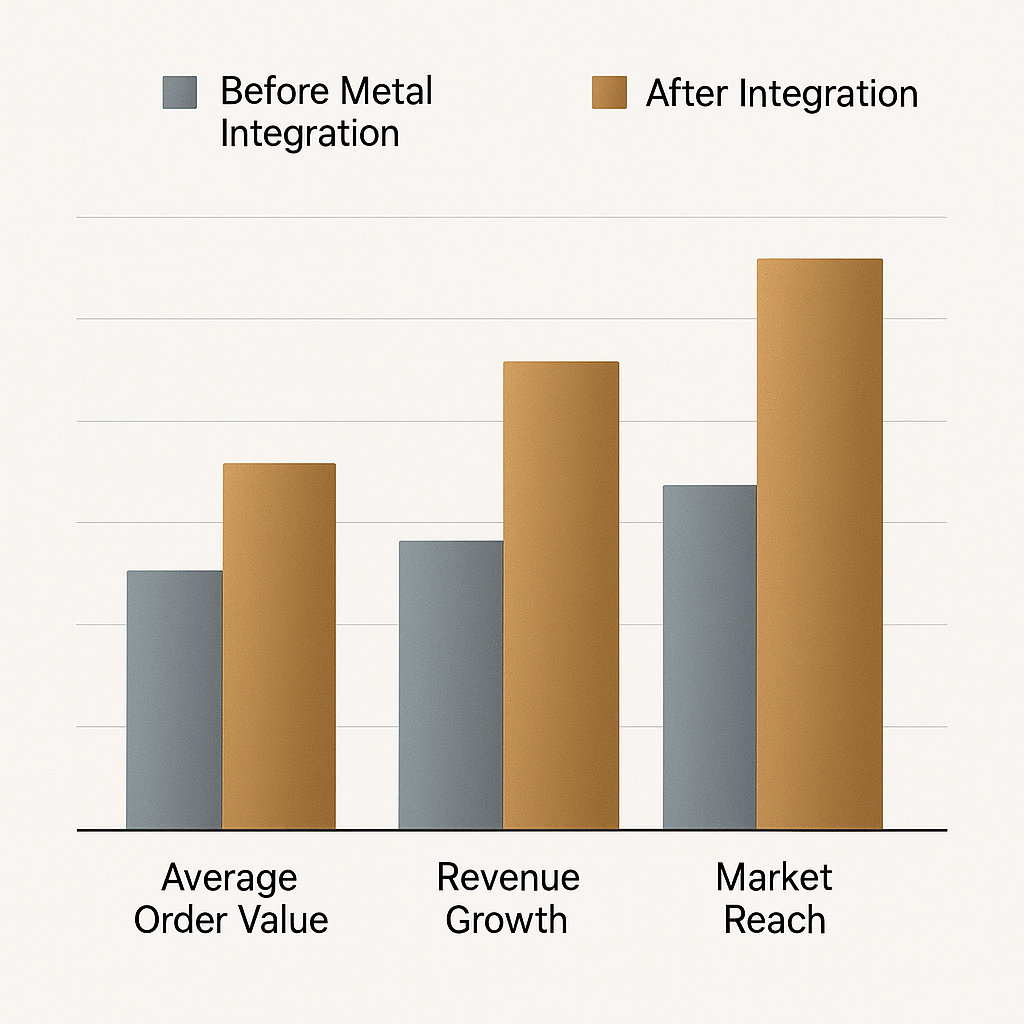
Step 1: Assess Your Current Capabilities
Before purchasing a single piece of metal equipment, take stock of what you already have. This assessment forms the foundation of your expansion strategy and helps prevent costly mistakes.
Start by creating a detailed inventory of your workshop space and tools. Measure your available floor space and identify areas that could accommodate metalworking stations. Metal fabrication typically requires dedicated areas due to sparks, heat, and specific ventilation needs. According to safety standards published by OSHA, metalworking stations should maintain at least 35 feet of separation from wood dust collection systems to prevent fire hazards.
Document all your existing tools that might serve dual purposes. For example, many power drills, some saws, and certain clamps work equally well with metal and wood. The Small Business Administration reports that businesses can save 15-20% on startup costs by properly assessing existing resources before making new purchases.
Skills Assessment
Next, evaluate your current skill set and identify gaps. Create a simple spreadsheet with three columns:
- Existing woodworking skills
- Transferable skills (those that apply to both wood and metal)
- Required metalworking skills you need to learn
Many woodworkers find they already possess valuable transferable skills: precision measurement, understanding of joinery (which applies differently but conceptually to metal), and design abilities.
Ask yourself honest questions about your comfort level with new processes. Are you willing to learn welding? Can you handle the noise and physical demands of metal fabrication? Do you understand the differences in material properties? This self-assessment helps you create a realistic training roadmap.
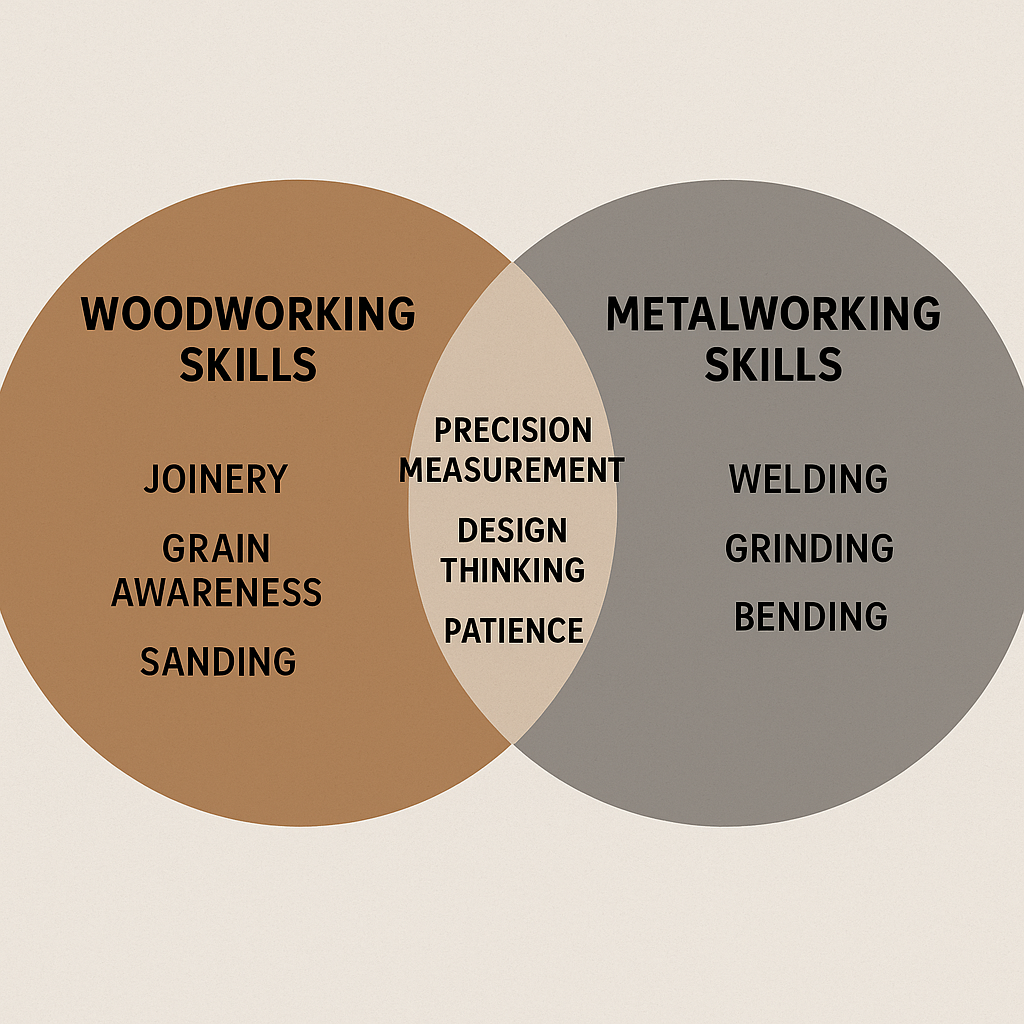
Step 2: Research Metal Fabrication Techniques
Once you’ve assessed your capabilities, research specific metalworking techniques that complement woodworking. Focus first on methods that will integrate naturally with your existing products.
Begin by studying basic metal cutting, joining, and finishing techniques. Steel, aluminum, brass, and copper each have unique properties that affect how they pair with various woods.
Techniques That Complement Woodworking
Pay special attention to these metalworking techniques that pair well with wood:
- Cold connections (rivets, bolts, screws) – These join metal to wood without heat that could damage wood fibers
- Simple bending and shaping – Creating metal frames, legs, or decorative elements
- Basic welding – For creating metal components that will later attach to wooden elements
- Sheet metal work – For decorative inlays or functional components like drawer pulls
Research metal materials that pair well with your wood species. For example, blackened steel complements walnut beautifully, while brass and maple create a striking contrast. Create a reference chart matching your commonly used woods with compatible metals based on both aesthetic and structural properties.
Step 3: Acquire Necessary Metalworking Equipment
With research complete, it’s time to invest in equipment. Start small and grow your toolkit as your skills and business needs expand.
The essential starter equipment for a woodworker adding metal fabrication includes:
- Metal cutting tools: Begin with an angle grinder ($80-379) and metal-cutting blades for your existing saws
- Joining equipment: A basic MIG welder ($300-700) is the most versatile starting point
- Metal bending tools: A bench vise with jaw covers ($100-200) and a metal brake ($200-500)
- Finishing equipment: Metal files, sandpaper, and polishing compounds ($50-100)
- Safety gear: Welding helmet, heat-resistant gloves, and flame-resistant clothing ($150-300)
According to a 2025 survey by Woodworker’s Journal, businesses that start with a budget of $1,000-2,500 for initial metalworking equipment achieve profitable integration within 6-9 months on average.
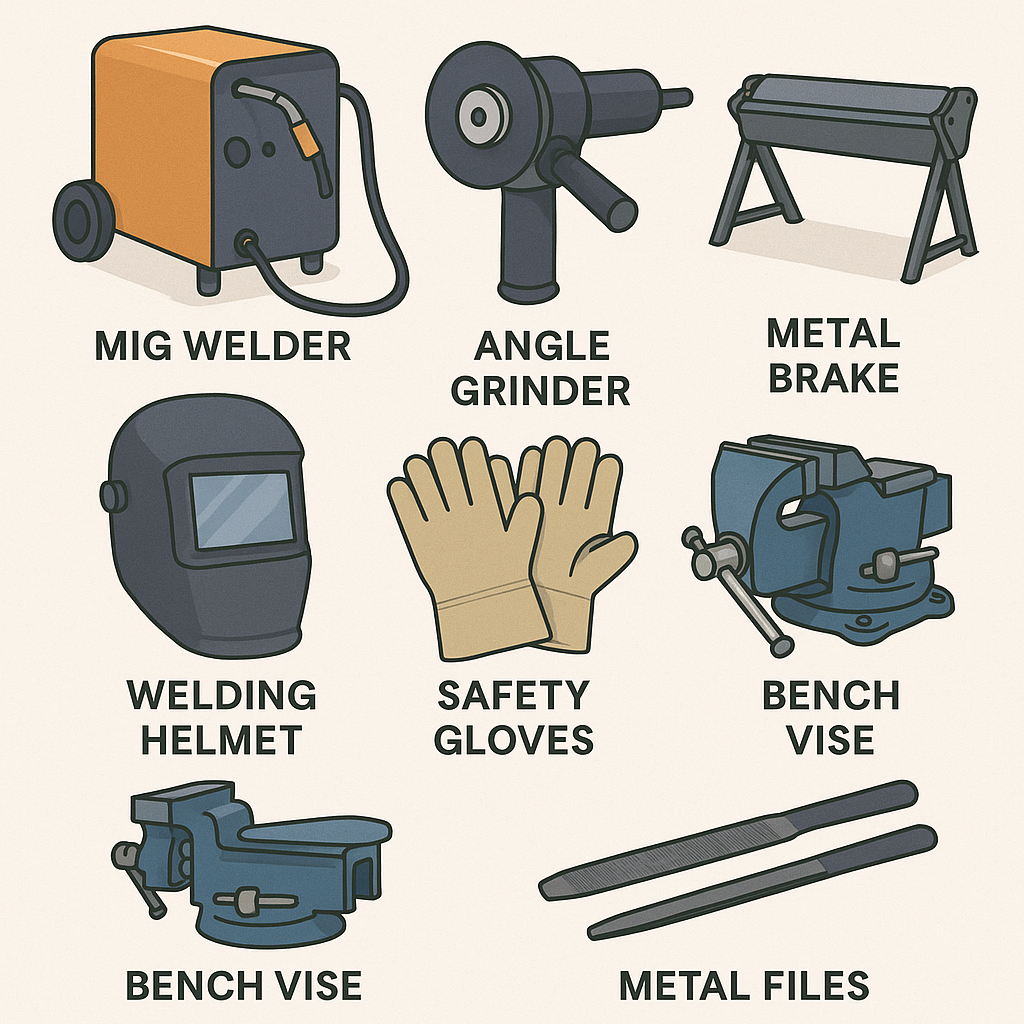
Equipment Compatibility Considerations
Ensure your new equipment works with your existing shop setup. Check that your electrical system can handle the increased load of welding equipment. A typical MIG welder requires a dedicated 20-30 amp circuit. Contact your local electrician for an assessment if you’re unsure.
Consider multi-purpose tools when possible. For example, some newer bandsaws come with variable speed settings that allow cutting both wood and metal by simply changing the blade.
Space-saving options are also important. Look for equipment with small footprints or wheels for mobility. When not in use, metalworking stations can be covered to protect wood areas from metal dust, which can cause rust spots in finished wood products.
Create a phased purchase plan that aligns with your skill development. Buy only what you need for your first few metal-wood projects, then reinvest profits into additional equipment as your capabilities grow.
Step 4: Train in Metalworking Skills
With equipment in place, focused training becomes critical. Unlike woodworking where many learn through trial and error, metalworking requires more structured training due to safety concerns and technical requirements.
Invest in structured learning through online courses or local workshops. Community colleges offer evening metalworking classes for $200-500 that provide hands-on experience with instructor supervision. Trade schools and vocational centers often provide weekend workshops specifically for woodworkers adding metalworking to their skill set.
Practice Projects
Start with simple practice projects that combine both materials:
- Metal table legs with wooden tops
- Wooden shelves with metal brackets
- Small boxes with metal hinges you’ve fabricated
- Picture frames with metal corners
Start by mastering basic welding joints: butt, lap, T, and corner joints. Once comfortable with these fundamentals, practice cutting precise angles and creating clean bends. Remember that metalworking, like woodworking, requires developing muscle memory and an eye for detail that only comes through repetition.
Track your progress by recreating the same simple project every month. This provides a clear measure of your skill development and builds confidence. As your skills improve, you’ll be ready to incorporate metal elements into your regular woodworking product line, gradually building a reputation for distinctive wood-metal creations.
Creating a Learning Timeline and Tracking Progress
Create a realistic timeline for skill development. Most woodworkers transitioning to metal fabrication require 6-12 months to develop marketable skills. Break this period into specific milestones:
- Months 1-2: Master basic cutting and shaping techniques
- Months 3-4: Learn fundamental joining methods (welding, riveting, bolting)
- Months 5-6: Practice finishing techniques and rust prevention
- Months 7-12: Create increasingly complex practice projects combining wood and metal
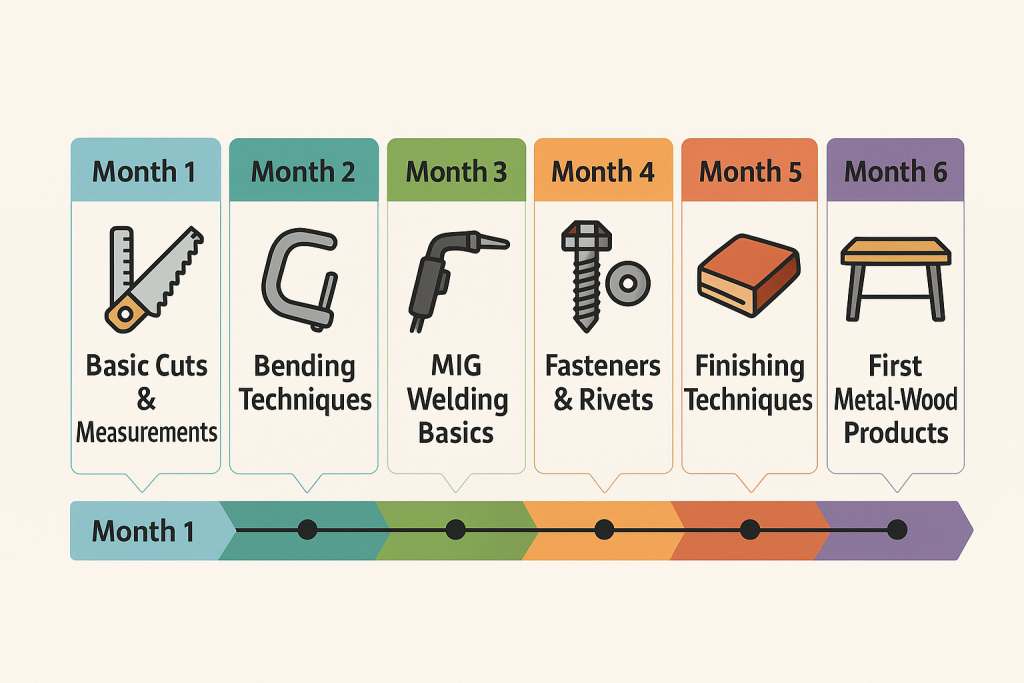
Benefits of Metal and Wood Combinations
TL;DR:
- Combining metal with wood creates products with increased strength, durability, and visual appeal
- Mixed-material designs command premium pricing and open doors to higher-end markets
- Metal-wood integration satisfies growing consumer demand for unique, functional, and sustainable products
Enhancing Product Design
The fusion of metal and wood in product design has transformed traditional woodworking, creating pieces that stand out in both form and function. When these materials come together, they complement each other’s strengths while minimizing weaknesses. Wood brings warmth, natural beauty, and workability to products, while metal adds strength, precision, and industrial appeal. This combination allows woodworkers to create items that would be impossible with wood alone.
Products combining metal and wood sell for 15-30%+ higher prices than single-material counterparts. This price premium exists because these hybrid designs solve practical problems while creating visual interest. For example, metal legs on wooden tables provide stability that pure wood constructions might lack. Similarly, metal drawer pulls and hinges on wooden cabinets offer durability at high-touch points while maintaining the cabinet’s overall wooden aesthetic.
From a design perspective, the contrast between materials creates visual tension that draws attention. The cool, reflective qualities of metals like brass, copper, or blackened steel against the warm tones of walnut, maple, or oak create a rich sensory experience.
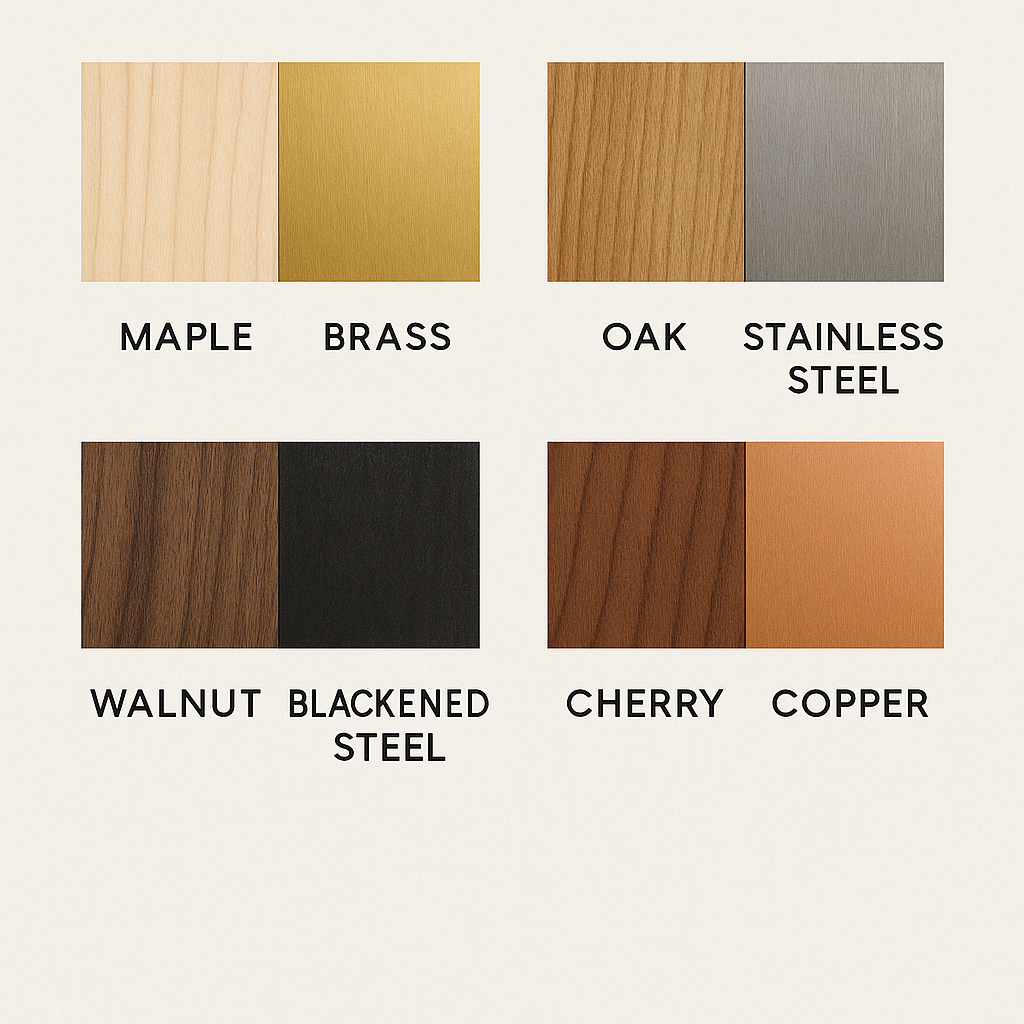
Expanding Your Design Language
Adding metal to your repertoire expands your design vocabulary significantly. You gain access to new forms, joints, and structural solutions previously unavailable. Metal allows for thinner, stronger components than wood alone can provide. This enables designs with more negative space, cantilevered elements, and structural spans that would be impossible with wood alone.
Contemporary designers like Tage Frid and Sam Maloof pioneered techniques that integrate metal components into wooden furniture without compromising the integrity of either material. Their approaches demonstrate how metal can solve structural problems while enhancing rather than distracting from the wood’s natural beauty.
Attracting New Customer Segments
Introducing metal fabrication capabilities allows woodworkers to reach entirely new customer bases. The ability to work with multiple materials appeals to specific market segments that pure woodworking businesses might miss, including:
Commercial clients seeking durable, functional pieces for high-traffic areas often require the strength of metal combined with the warmth of wood. Restaurants, hotels, and offices increasingly specify mixed-material furniture that can withstand heavy use while maintaining aesthetic appeal.
Design-conscious homeowners pursuing contemporary or industrial aesthetics favor the mixed-material look as it aligns with current interior design trends. These customers are typically willing to pay premium prices for statement pieces that incorporate both materials.
Businesses that can showcase expertise in both woodworking and metalworking position themselves as full-service solution providers rather than specialized craftspeople. This perception shift attracts clients with complex projects who prefer working with a single provider rather than coordinating between separate wood and metal fabricators.
Higher Price Points and Profitability
Mixed-material products typically command higher prices than their all-wood counterparts. This pricing advantage stems from several factors: perceived value of diverse materials, additional skill requirements, and market positioning.
The pricing advantage extends beyond the direct material cost difference. Customers recognize the additional skills and equipment required for mixed-material work and expect to pay more accordingly. This perception allows for higher margins that can help offset the initial investment in metalworking equipment and training.
To effectively communicate this value to customers, successful woodworker-metalworkers create detailed documentation of their process, emphasizing the specialized techniques and equipment involved. This transparency helps justify premium pricing while educating customers about the craft.
Increased Product Durability and Functionality
The strategic addition of metal to wooden products significantly enhances their longevity and performance. This combination addresses inherent limitations of wood while preserving its desirable qualities. Wood, despite its beauty, has natural vulnerabilities—it expands and contracts with humidity changes, can split along grain lines under stress, and wears at high-friction points. Metal components strategically placed at these vulnerable areas can dramatically extend a product’s useful life.
Testing at the Forest Products Laboratory shows that wooden furniture with metal reinforcements at structural joints lasts 2-3 times longer under load testing than comparable all-wood constructions. This durability translates directly to customer satisfaction and reputation building. Pieces that maintain their integrity over decades become family heirlooms rather than disposable goods.
Beyond pure strength, metal components enable functional capabilities impossible with wood alone. Precision mechanisms, adjustable elements, and load-bearing components all benefit from metal’s properties. Consider adjustable standing desks—the lifting mechanism requires metal’s strength and precision, while wooden surfaces provide warmth and beauty. This functionality-focused approach to material selection creates products that solve real problems for users.
Sustainable Design Approaches
Contrary to common perception, combining wood and metal can enhance environmental sustainability when approached thoughtfully. Products that last longer reduce replacement frequency and overall resource consumption.
Strategic use of metal in high-wear areas extends product life while minimizing total metal content. This approach aligns with circular economy principles—designing for longevity and eventual material recovery. Metal components can be removed and recycled at end of life, while wooden parts can be repurposed or naturally decompose..
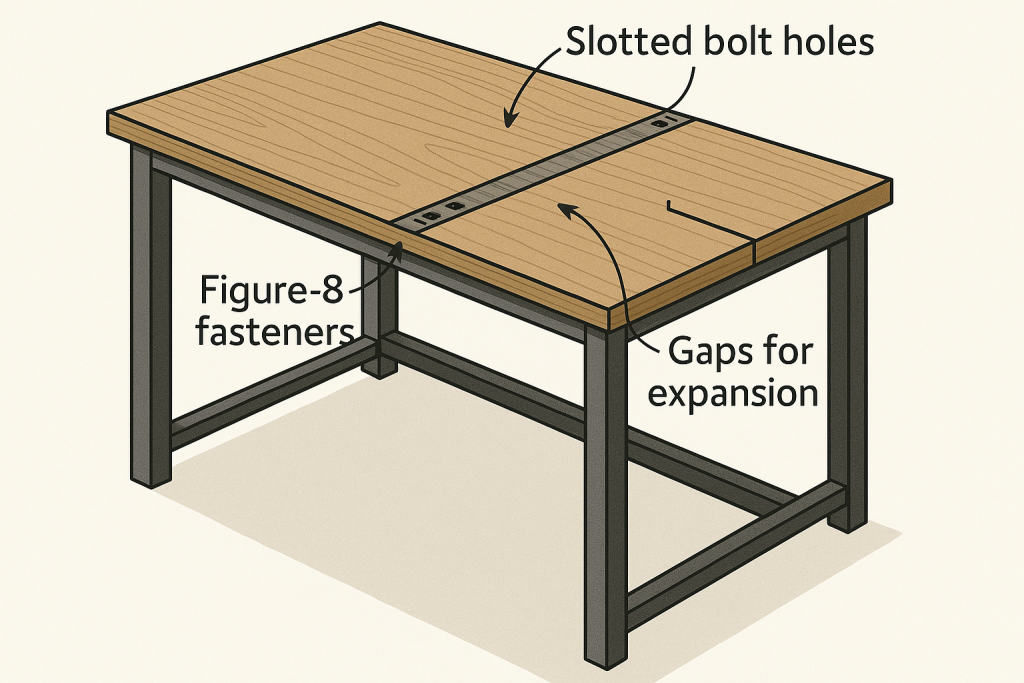
Operational Efficiency and Cost Benefits
Integrating metalworking into a woodworking business creates operational synergies that can reduce overall production costs and improve efficiency. These benefits often go unrecognized when focusing solely on product design advantages. Bringing metal fabrication in-house eliminates subcontractor markups and coordination delays that occur when outsourcing metal components.
The ability to produce both wood and metal components in-house also reduces material waste. Scrap from one process can often be repurposed for smaller components in another, maximizing material utilization. This efficiency extends to labor as well—team members can shift between wood and metal tasks as needed, smoothing production flow and reducing bottlenecks.
Equipment Utilization and Workshop Space
Many tools and workspace elements serve both woodworking and metalworking needs, creating economies of scale. Basic shop infrastructure—ventilation systems, dust collection, compressed air, and material handling equipment—supports both disciplines with minimal modification.
While some specialized tools remain material-specific, many general-purpose items serve double duty. Layout tools, measuring equipment, and some cutting tools work effectively on both materials. Even storage and workspace organization systems can accommodate both disciplines with thoughtful planning.
Market Differentiation and Competitive Advantage
In an increasingly crowded marketplace for handcrafted goods, the ability to work with both wood and metal creates significant competitive differentiation. This capability allows businesses to stand out from specialized woodworkers or metalworkers by offering integrated solutions that neither can provide independently.
This differentiation becomes particularly valuable when bidding on projects with complex requirements. Commercial clients, interior designers, and architects often prefer working with vendors who can handle multiple aspects of a project rather than coordinating between specialized craftspeople. This “one-stop shop” appeal translates into higher project win rates and stronger client relationships.
Building a Unique Brand Identity
The ability to work in multiple materials provides rich material for brand storytelling and marketing. Businesses can highlight their versatility, problem-solving approach, and commitment to choosing the right material for each application. This narrative distinguishes them from competitors limited to single-material solutions.
Successful multi-material businesses often develop signature combinations or techniques that become recognizable brand elements. These distinctive approaches—whether specific joint details, material pairings, or surface treatments—create visual recognition and customer loyalty. They transform technical capability into brand identity.
Integrate Metalworking into Your Woodworking Shop
Adding metal fabrication to your woodworking business is a practical step that opens new possibilities for your craft and business. By following the steps outlined—assessing capabilities, researching techniques, acquiring equipment, and training in metalworking—you can create products that stand out in the marketplace.
The combination of metal and wood not only enhances your designs but also attracts customers looking for durable, unique pieces. Remember that this expansion requires patience. Start with small projects to build confidence before tackling complex metal-wood integrations.
As you grow your skills, keep learning from the resources we’ve shared. Join online communities where craftspeople discuss these mixed-material approaches. Document your progress and learn from both successes and mistakes.
Your woodworking business can evolve while maintaining its core identity. Metal fabrication isn’t about abandoning woodworking—it’s about enhancing it. The market for mixed-material pieces continues to grow, giving you a competitive edge when you master both worlds.
Take that first step today, whether it’s researching equipment or signing up for a basic welding course. Your future business will thank you for the expanded capabilities and fresh creative directions.
